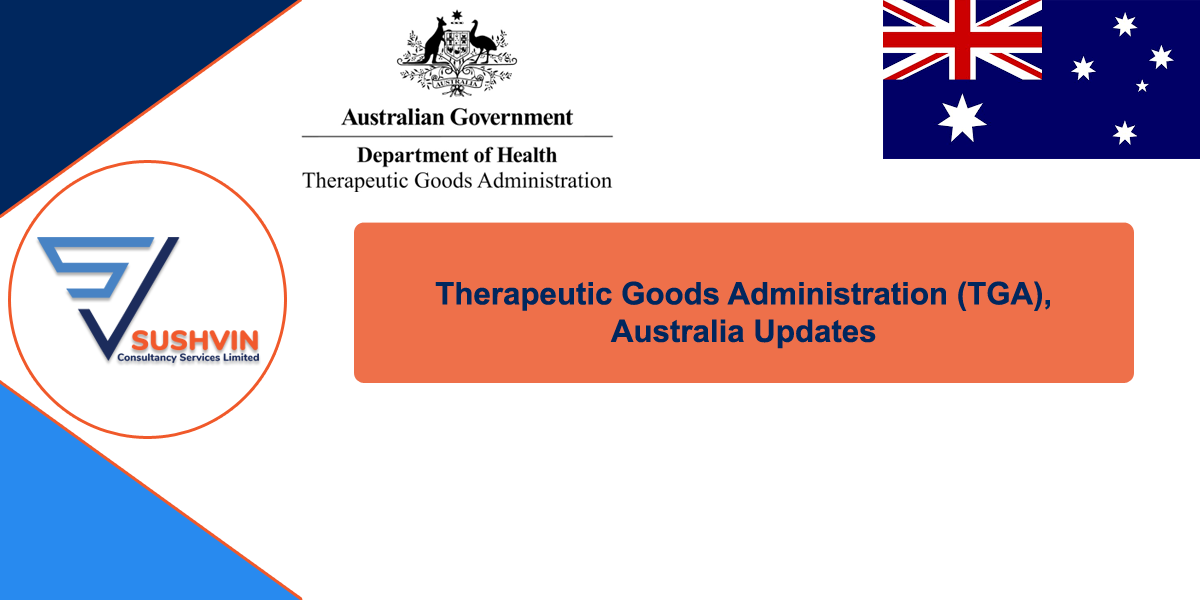UK Updates

Important Update for Medical Device Manufacturers
If you're in the process of obtaining a UKCA / CE / CE UKNI marking for your medical device, conducting a clinical investigation might be a necessary step. To streamline your efforts, here are some key points to keep in mind:
1. Notification to MHRA: Inform the MHRA at least 60 days prior to starting your clinical investigation.
2. Clinical Investigation Flow Chart: Use the provided flow chart to determine if a formal clinical investigation submission is required.
3. Annex XVI Applications: Note that applications under Annex XVI of the Medical Device Regulation (EU) 2017/745 (MDR) for devices with no intended medical purpose cannot be accepted in Great Britain (GB).
4. Clinical Investigation Enquiries: For specific enquiries related to clinical investigations, contact info@mhra.gov.uk with 'clinical investigation enquiry' in the subject line.
5. Fees: New fees for clinical investigations and amendments were introduced in April 2023. Check section 9 of the fees page for details.
Stay informed which ensures compliance with the latest regulations to facilitate a smooth approval process for your medical devices.
UK Clinical Trials Regulations Are Evolving!
After two years of collaboration between the Health Research Authority (HRA) and the Medicines and Healthcare products Regulatory Agency (MHRA), a milestone has been reached in updating the Medicines for Human Use (Clinical Trials) Regulations 2004. The statutory instrument to amend these regulations has now been laid before Parliament.
Why This Matters The changes aim to make the UK a global leader in clinical trials by creating a more efficient, transparent, and participant-focused research system. Here’s what’s coming:
Why It’s Important Clinical trials are built on trust. These updates ensure researchers follow clear, participant-centered standards, offering confidence to those considering participation. By reducing administrative burdens while maintaining rigorous safeguards, these regulations will support innovative research and strengthen the UK’s position in global clinical research.
The updated regulations will be debated early next year, with implementation planned for early 2026 after a 12-month transition period.
Let’s celebrate this significant step forward for clinical research in the UK! 🚀
Festive reflections on Med Tech
11 December 2024 - Categories: Med Tech Regulations, Medical Devices
The article from Laura Squire reflects on the developments and milestones in the Med Tech regulatory landscape throughout 2024. Here are some of the key highlights:
Key Milestones:
Looking Forward to 2025:
Overall, the article showcases the efforts and achievements of the MHRA team in improving communication, transparency, and regulatory frameworks for medical devices.
UK MHRA Update: New Post-Market Surveillance (PMS) Regulations for Medical Devices
As of December 20th, the UK has introduced new statutory regulations aimed at strengthening Post-Market Surveillance (PMS) for medical devices. The Medical Devices (Post-market Surveillance Requirements) (Amendment) (Great Britain) Regulations 2024 bring important updates that will impact manufacturers and stakeholders across the medical device industry.
Key Highlights:
These updates reflect the growing importance of safety monitoring and regulatory compliance for medical devices post-market.
The new regulations will come into force 6 months from the date they were made.
The Medicines and Healthcare products Regulatory Agency (MHRA) has unveiled a new roadmap for the future regulatory framework of medical devices. This update is set to bring significant changes aimed at enhancing patient safety and ensuring swift access to essential medical devices2.
Key highlights include:
Stay ahead in the industry by keeping up with these regulatory changes!
European Updates

Art 10a Information by manufacturer in case of interruption or discontinuation of supply dated 9 th December.
Article 10a of the MDR and IVDR requires manufacturers to inform relevant authorities and stakeholders if there's an anticipated interruption or discontinuation in the supply of certain medical devices. This ensures patient safety and continuity of care by minimizing risks related to the unavailability of medical devices.
Ensuring Patient Safety and Continuity of Care: Understanding Article 10a
In the ever-evolving landscape of medical devices, patient safety and uninterrupted care are paramount. With the recent updates on December 9th, Article 10a of the Medical Devices Regulation (MDR) and In Vitro Diagnostic Medical Devices Regulation (IVDR) highlights the critical role manufacturers play in maintaining these standards.
What is Article 10a? Article 10a mandates that manufacturers notify relevant authorities and stakeholders about any anticipated interruptions or discontinuations in the supply of certain medical devices. This proactive measure aims to safeguard patient care by ensuring that essential devices remain available.
Why is it Important? By requiring timely communication, Article 10a helps healthcare providers and authorities prepare for potential supply issues, thereby reducing the risk of disruptions in patient care. This regulation underscores the industry's commitment to patient safety and the continuous availability of life-saving devices.
Takeaway for Manufacturers: Stay informed and proactive. Ensure you have robust notification processes in place to comply with Article 10a. Your diligence today can make a significant difference in patient outcomes tomorrow.
The Q&A is available on the Commission web site. Click Here
Eighth session: MDR Technical Documentation Training for Manufacturers
TEAM-NB set up a new date for the MDR technical documentation training for manufacturers on February 12th, 2025. For More Information and Registration 👉 Click here!
Important Update on Class D Device Oversight in the EU
Following the recent Team-NB press release, significant progress has been made towards the full implementation of performance and batch verification for Class D devices under the In Vitro Diagnostic Regulation (IVDR).
Key Update:
Multi Services Agreement (MSA) Implementation: Notified Bodies (NBs) have collaborated with European Reference Laboratories (EURLs) to streamline processes for Class D device oversight. The newly endorsed MSA template formalizes the workflow between NBs and EURLs, enhancing the consistency and harmonization of performance verification and batch testing activities.
These efforts ensure compliance with key EU regulations (EU 2022/944, EU 2022/945, and EU 2023/2713) and are crucial for the proper oversight of Class D devices, as required by article 100 of the IVDR.
As the NBs quickly adopt the MSA template, they are reinforcing their commitment to safety and regulatory compliance across the EU market. This collaborative approach is vital for maintaining the highest standards in medical device regulation.
Stay tuned for more updates as we continue advancing the safety and efficacy of medical devices across Europe.
Team-NB adopted a common paper to submit application describing pre-application, application and Post application phases processes through which manufacturers may apply to Notified Bodies (NBs) for the certification of medical devices under the regulation (EU) 2017/745 (MDR).
South Korea Updates

MFDS Updates- Exciting News in Digital Health Regulation!
On January 23, 2024, South Korea's Ministry of Food and Drug Safety (MFDS) passed the Digital Medical Products Act (DMPA), a significant leap forward in ensuring the safety, quality, and efficacy of digital health technology. 🌐💉
Key Highlights of the DMPA:
The DMPA represents a pivotal moment in the regulation of digital medical products, promising enhanced quality and safety standards in the industry.
ISO Updates
Big News in Medical Device Safety: ISO 10993-4 Amendment Published!
The latest amendment to ISO 10993-4 is finally here! 🌟 This update is a significant milestone in the biological evaluation of medical devices, particularly focusing on the selection of tests for interactions with blood.
What’s New? The 2025 amendment enhances guidelines for evaluating the safety and efficacy of medical devices that interact with blood. This ensures that these devices meet the highest standards for patient safety.
Why It Matters: Medical devices that come into contact with blood play a critical role in patient care. With the updated ISO 10993-4, manufacturers can better assess the biological risks, ensuring safer and more effective products.
Key Takeaways for Manufacturers:
Let's celebrate this progress and continue to innovate for a safer future!
The ISO 10993-4:2017/Amd 1:2025 amendment, addressing the biological evaluation of medical devices, specifically focuses on selecting tests for interactions with blood. This update is crucial for ensuring the safety and efficacy of medical devices that come into contact with blood. Some changes were placed, IMO in most cases significant for the laboratories and BEP/BER preparation specialists.
MDCG Updates
Important Update in Medical Device Regulation!
The Medical Device Coordination Group (MDCG) has released a revision to MDCG 2019-13, titled "Guidance on sampling of MDR Class IIa / Class IIb and IVDR Class B / Class C devices for the assessment of the technical documentation". The revised version (rev.1) was published in December 2024. 📄🔍
Key Highlights of the Revision:
The new modifications have been added to page 5 of the document, providing updated guidance on the sampling requirements for MDR Class IIa / Class IIb and IVDR Class B / Class C devices.
These changes are critical for manufacturers, regulators, and stakeholders to ensure compliance with the latest standards and enhance the safety and performance of medical devices.
Australia Updates

Stay Updated with TGA Australia's Regulatory Guidelines for Medical Devices!
The Therapeutic Goods Administration (TGA) has recently updated the Australian Regulatory Guidelines for Medical Devices (ARGMD) on December 9, 2024. This comprehensive guide provides crucial information for manufacturers, importers, exporters, and suppliers in the medical device industry.
Key highlights include:
Keeping abreast of these guidelines ensures compliance and upholds the highest standards of safety and performance in the medical device industry.
